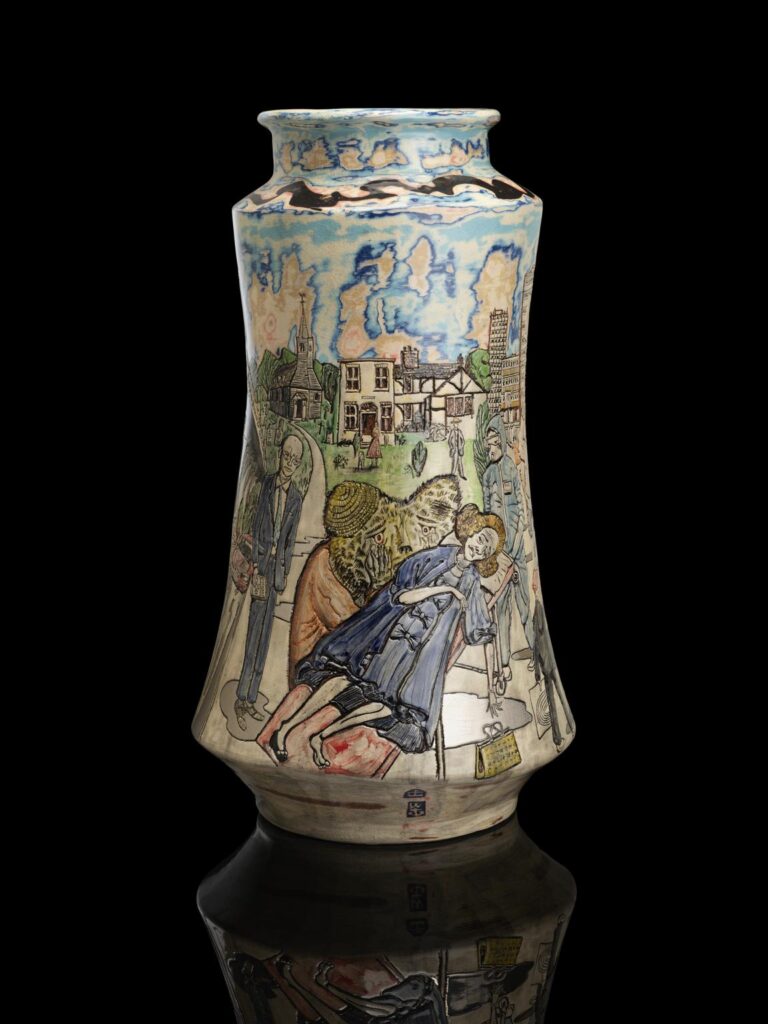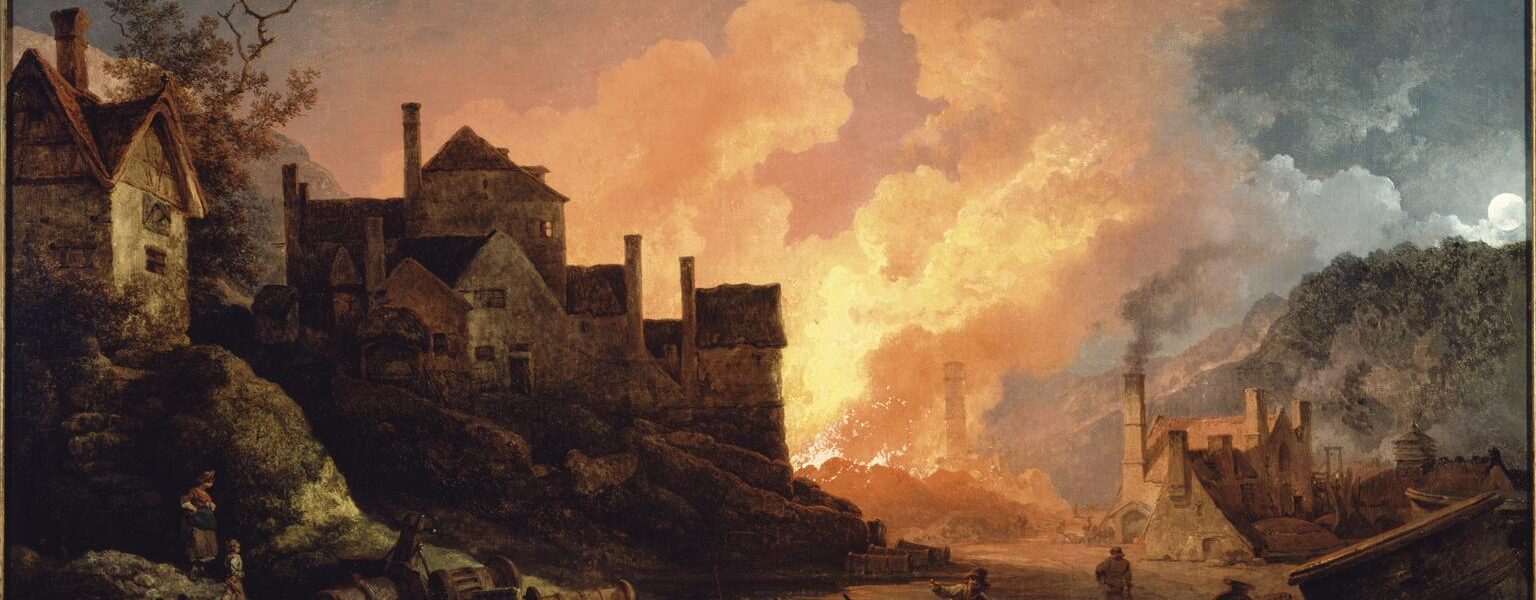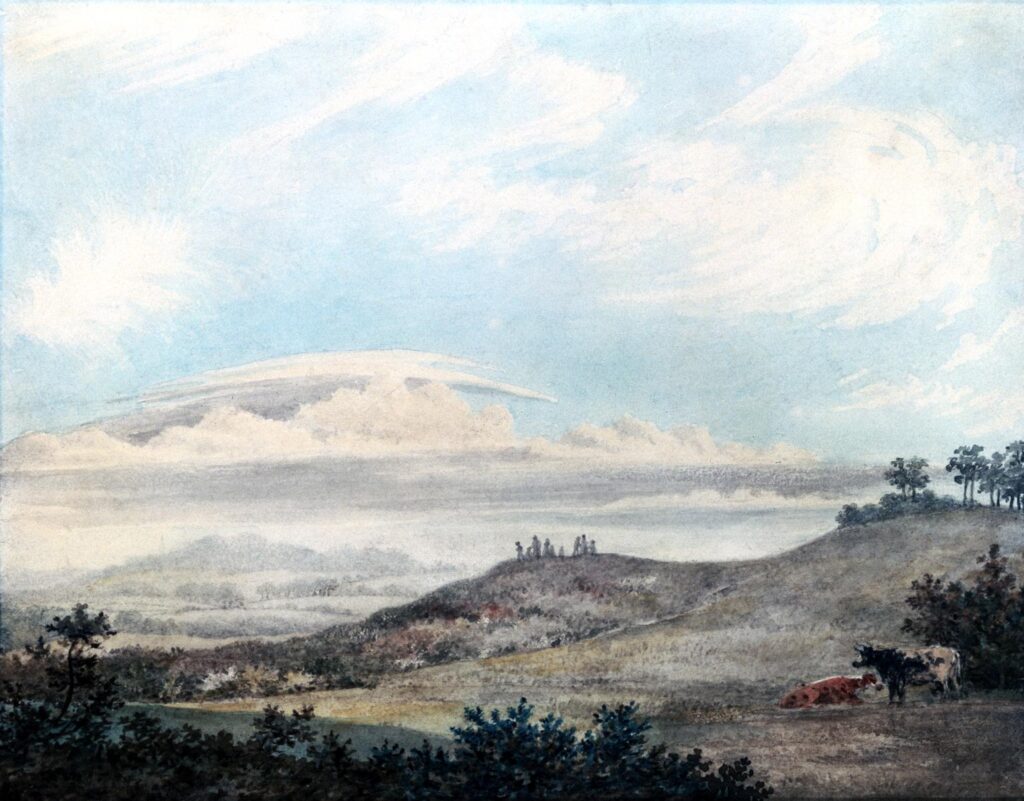Scientists and artists have always shared a curiosity about the natural world. Explore artworks and stories across our permanent free galleries and exhibition on this self-guided trail to discover how art, science, and nature are deeply intertwined.
STOP 1: Mathematics: The Winton Gallery, Level 2
Start your tour by heading to the Mathematics: The Winton Gallery on the 2nd floor via Lift or Stairs C. Enter the gallery and take an immediate right to find the ‘Perspective’ section. In a case against the entrance wall you will see the first stop: Print of Herrenhausen Gardens.
The garden has always been a place of contemplation, wellbeing and production. It is a space where medicine and food are grown but also where observation of the natural world has led to some of humanity’s greatest scientific breakthroughs. In the 17th and 18th centuries, gardens of the wealthy elite also displayed power, wealth, and intellectualism. Here we see one of the most impressive early Baroque gardens of this time, the Great Garden of the Herrenhausen Gardens in modern day Hannover, Germany.

Why do you think this artwork is in the Mathematics gallery? Look closely at the print before you. There is a clear central line of symmetry with circular focal points for decorative fountains. The gardens are laid out with clear geometric shapes and sight lines to create a sense of order.
The Great Garden is a clear symbol of scientific and mathematical mastery as well as demonstrating power over nature.
STOP 2: Medicine: The Wellcome Galleries, Level 1
Go through the Mathematics gallery, past lift D, and all the way through Information Age to get to lift and staircase E. Take the lift down one floor where you will exit into Faith, Hope and Fear section of the Medicine: Wellcome Galleries. Take a left past this section and into the Medicine and Communities section on the left-hand side. In a case you will see your next stop: the large vase titled Alan Measles – God in the time of Covid-19 by Grayson Perry, 2020.

With this ceramic albarello vase, a traditional form of European pharmacy ware, the Turner prize-winning artist Grayson Perry explores his emotional experiences during the global pandemic of 2020 caused by the Covid-19 coronavirus.
Alan Measles, Perry’s beloved teddy bear, mourns the illness of the artist’s alter ego Claire. Professor Chris Witty, then the UK’s Chief Medical Officer, looks on alongside figures wearing PPE, protesters, and people bearing rainbow placards – all iconic images of the pandemic.
Drawing attention to the background, we see people enjoying large open green spaces within a rural landscape. In stark contrast, to the viewer’s right stand tall tower blocks of flats common to urban city centres. Green space was recognised as vital to supporting people’s mental health and wellbeing during the pandemic. People with access to nature and natural environments are likely to display more psychological resilience and lower rates of depression, anxiety and stress. This resilience was especially important during the lockdowns. UK Government Covid regulations allowed for outdoor exercise but, as Perry illustrates, access to green spaces is not universal. Many communities across the UK and the world are championing ‘urban greening’ projects to share the healing power of nature.
STOP 3: Making the Modern World, Level 0
Go back to lift or stairs E and head down to level 0. Walk through Making the Modern World and find the painting showing furnaces with flames and smoke.

In this painting we see Philippe Jacques de Loutherbourg’s depiction of the Bedlam furnaces at Coalbrookdale in Shropshire. Flames and smoke rise from furnaces turning iron ore from the earth into industrial and domestic products. Here we see raw, natural materials of the earth fueling the Industrial Revolution of the 19th century.
Painted in 1801, Coalbrookdale by Night explores early anxieties about the relationship between nature, rural landscapes, and industrialisation. Today, scientific minds are looking to rebalance this relationship by building sustainable solutions to our energy demands that support natural biodiversity.
STOP 4: Making the Modern World, Level 0
Move further along the wall to the left until you find two framed watercolours which are the next stop on this trail: Cloud Studies and landscapes by Luke Howard and Edward Kennion.
Science owes its very existence to the practice of observing nature, and landscape painting influenced early scientific categorization. These watercolours depict twisting, whirling cloud formations above rural landscapes and are the combined efforts of Luke Howard (1772-1864) and Edward Kennion (1744-1809).
The remarkable cloud studies were made by the meteorologist Luke Howard. Through his meticulous artwork, in his Essay on the Modification of Clouds published in 1803 Howard created the cloud categories that we still use today. On display here you can see the ‘Nimbus’ and the ‘Cumulostratus forming’ below ‘fine weather cirri’. In 1833, Howard produced the first ever record of human activity influencing climate. He demonstrated that London was warmer than the surrounding countryside partly due to the density of humans and animals in addition to the heat/energy production for manufacturing and fuel. This is now known as the urban heat island effect.
Cloud observation is still vitally important in scientific research, in particular climate sciences and understanding our climate system. Anyone with a camera can contribute to this research through citizen science projects such as NASA’s GLOBE Program by sending observations of the clouds at certain times and locations.
Howard’s cloud studies not only inspired the scientific world but also the works of well-known artists including John Constable and J. M. W. Turner.
STOP 5: Future of Food Exhibition, Special Exhibition Gallery 1, Level 1
*The next stop is part of our special exhibition the Future of Food and requires a free ticket, we recommend booking in advance.
Exit the Making the Modern World gallery and take lift or stairs D up to Level 1. Walk through the Engineers gallery (on the right as you exit the lift, on the left as you come up the stairs). You will then reach the entrance for the Future of Food exhibition. Walk through the first two rooms, through the transition space which shows data on the impact of farming on the climate and nature. You will come into the area which explores advances in biotechnology and ecology which will help create a sustainable future of food. Look for the ‘Engineering Food’ section and find the sculpture of a wheat stomata, this is the next object: Stomata on the epidermis of wheat by Jodie Armand, 2025.

Artist and scientist Jodie Armand is part of the team led by Professor Julie Gray at the University of Sheffield studying plant stomata –tiny pores on the surface of plants – and their role in regulating water and cooling.
As part of the team’s research into developing crops that are more resistant to drought and climate change, 3D images of plant cells are generated to investigate how the specialised geometry of cells relate to their opening and closing – a crucial process that allows CO₂ to enter the leaf for photosynthesis while minimizing water loss in the plant.
These 3D images form the basis of Armand’s creative practice. Armand made this sculpture by handknitting the cells captured in a 3D image of a real wheat leaf with stainless-steel wire, making each cell 2000 times larger than reality, in order to share the beautiful complexity of these microscopic pores. Armand acknowledges that it was the overwhelming feeling of awe and amazement the first time she looked down a microscope in school that sparked her desire to become a scientist and hopes that her science-art recreates that experience for others and helps inspire the next generation of scientists.
The Science Museum is open 10.00-18.00, seven days a week (last entry 17.15). Head to our website to pre-book your free tickets.
This event is part of Art History Festival 2025 organised by the Association for Art History.


